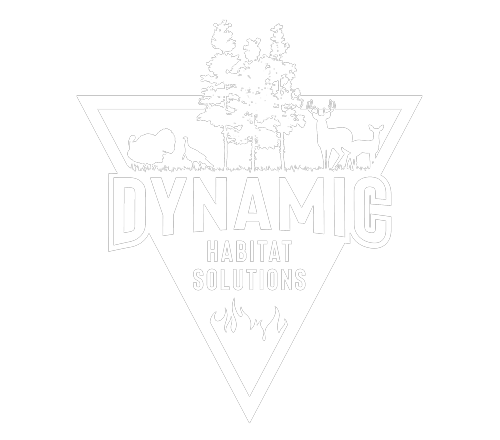What Is Habitat Restoration And How Does It Work?
Do you know what happens when nature needs a little help to feel better? This help is called habitat restoration. It’s like when you get a scratch and need a band-aid to heal. Nature sometimes needs help to recover from damage caused by people or other things.
What Is Habitat Restoration?
Habitat restoration is a way to help nature by fixing places where plants and animals live when they are not doing well. These places can include forests, rivers, and lakes. Problems like pollution, too much cutting down trees, or dirty water can make these places sick. When we try to fix them, we are doing habitat restoration. It’s all about giving nature a boost to be healthy again.
Why Is Habitat Restoration Important?
Just like how you need a home to live in, animals and plants need their homes, too. When their homes, or habitats, are damaged, it makes it hard for them to live there. This can be very bad for nature and for us because we need plants and animals to help keep our planet healthy and beautiful.
How Does Habitat Restoration Work?
Restoring habitats is like playing nature’s helper. People who work in habitat restoration study the damaged places. They figure out what went wrong and what they can do to help. This could mean planting more trees, cleaning up trash, or removing invasive plants that shouldn’t be there.
Steps of Habitat Restoration
- Assess the Site: First, experts look at the place that needs help. They learn what the problems are and what solutions might work best.
- Plan the Restoration: After finding out what’s wrong, they make a plan to fix it. This plan includes steps to help the area recover.
- Restore the Habitat: Now it’s time to get to work! This can include planting new trees or plants, cleaning up polluted areas, or making water cleaner for fish to swim in.
- Monitor the Progress: After the work is done, they keep an eye on the area. They make sure the plants grow and the animals come back. If there are problems, they fix them right away.
Who Helps With Habitat Restoration?
Many people help with habitat restoration! Scientists, conservationists, and volunteers all pitch in. They work together because saving nature is important for everyone. Groups like Dynamic Habitat Solutions also help because they have the tools and know-how to make a big difference.
Dynamic Habitat Solutions and Their Role
Dynamic Habitat Solutions is special because they have a big mission. They believe in taking care of nature as a way to honor God. They fix habitats by restoring land and water for plants and animals, making sure it stays healthy for us and the creatures that live there. Their work is guided by their faith and commitment to taking care of the Earth.
As a pond contractor, Dynamic Habitat Solutions uses cool machines like the Truxor T50 to clean ponds, remove weeds, and make the water better for fish and plants. They help ponds and wetlands stay clean and clear, which is important for the environment.
Common Types of Habitat Restoration
Forest Restoration
Sometimes, too many trees are cut down, making it hard for animals to find homes. By planting new trees, we give those animals places to live again. New trees also help clean the air we breathe.
River and Stream Restoration
Rivers and streams can get dirty from pollution. Cleaning up these waterways and fixing them can help fish and other water animals. It also makes the water safe for drinking and playing.
Wetlands Restoration
Wetlands are squishy, watery areas that are homes to many birds and insects. They often get filled in or polluted. Restoring them means cleaning and sometimes bringing back the water so wildlife can return.
How Does Restoration Help Us?
When habitats are restored, they help keep the world balanced. Trees and plants grow better, which gives us cleaner air and water. Animals have places to live, which means more birds to watch and more fish to catch and eat.
The Challenges of Habitat Restoration
Restoring habitats isn’t always easy. Sometimes, it takes a long time to see changes. Other times, it costs a lot of money or needs big machines. But people work hard because it’s important for the Earth’s health.
Tools and Technology
Helping nature gets a boost from technology! Machines like the ones used by Dynamic Habitat Solutions can do heavy work, like dredging ponds. These machines help clear unhealthy stuff out quickly and safely.
Why We Should Care
Caring for the Earth by restoring habitats means we’re protecting our future. Everything in nature works together, and healthy habitats mean a healthy planet. We need to make sure that both people and animals can live well.
How Can You Help?
Even if you’re young, there are ways you can help with habitat restoration. Here are a few ideas:
- Plant Native Flowers and Trees: This helps bees, birds, and other animals.
- Clean Up Litter: If you see trash outside, pick it up and put it in a bin.
- Learn and Share: Tell others about how important it is to take care of nature.
Conclusion
Helping the Earth’s natural places feel better is what habitat restoration is all about. By fixing forests, rivers, and wetlands, we help plants and animals live happily. Groups like Dynamic Habitat Solutions work hard to make this possible.
If you want your pond or wetland to be healthy and full of life, where fish swim easily and birds enjoy the clean water, think about contacting Dynamic Habitat Solutions. They are experts at making habitats friendly for nature.
